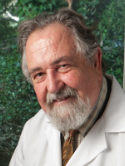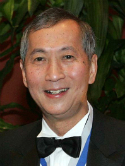Effect of respiratory gating on quantifying PET images of lung cancer Journal Article
| Authors: | Nehmeh, S. A.; Erdi, Y. E.; Ling, C. C.; Rosenzweig, K. E.; Schoder, H.; Larson, S. M.; Macapinlac, H. A.; Squire, O. D.; Humm, J. L. |
| Article Title: | Effect of respiratory gating on quantifying PET images of lung cancer |
| Abstract: | We have developed a new technique to gate lung 18F-FDG PET images in synchronization with the respiratory motion to reduce smearing due to breathing and improve quantitation of 18F-FDG uptake in lung lesions. Methods: A camera-based respiratory gating system, the real-time position management (RPM), is used to monitor the respiratory cycle. The RPM provides a trigger to the PET scanner to initiate the gating cycle. Each respiratory cycle is divided into discrete bins triggered at a defined amplitude or phase within the patient's breathing motion, into which PET data are acquired. The acquired data within the time bins correspond to different lesion positions within the breathing cycle. The study includes 5 patients with lung cancer. Results: Measurements of the lesions' volumes in the gated mode showed a reduction of up to 34% compared with that of the nongated measurement. This reduction in the lesion volume has been accompanied by an increase in the intensity in the 18F-FDG signal per voxel. This finding has resulted in an improvement in measurement of the maximum standardized uptake value (SUVmax), which increased in 1 patient by as much as 159%. The total lesion glycolysis, defined as the product of the SUVmax and the lesion volume, was also measured in gated and nongated modes and showed a consistency between the 2 measurements. Conclusion: We have shown that image smearing can be reduced by gating 18F-FDG PET images in synchronization with the respiratory motion. This technique allows a more accurate definition of the lesion volume and improves the quantitation specific activity of the tracer (in this case, 18F-FDG), which are distorted because of the breathing motion. |
| Keywords: | adult; clinical article; controlled study; aged; aged, 80 and over; middle aged; squamous cell carcinoma; radiopharmaceuticals; image analysis; tumor volume; lung non small cell cancer; lung neoplasms; lung cancer; standardization; quantitative analysis; fluorodeoxyglucose f 18; computer assisted emission tomography; fluorodeoxyglucose f18; data analysis; motion; respiration; artifacts; technique; breathing pattern; tomography, emission-computed; 18f-fdg; camera; respiratory gating; total lesion glycolysis; humans; human; male; female; priority journal; article; standard uptake value |
| Journal Title: | Journal of Nuclear Medicine |
| Volume: | 43 |
| Issue: | 7 |
| ISSN: | 0161-5505 |
| Publisher: | Society of Nuclear Medicine |
| Date Published: | 2002-07-01 |
| Start Page: | 876 |
| End Page: | 881 |
| Language: | English |
| PUBMED: | 12097456 |
| PROVIDER: | scopus |
| DOI/URL: | |
| Notes: | Export Date: 14 November 2014 -- Source: Scopus |
Citation Impact
Related MSK Work









